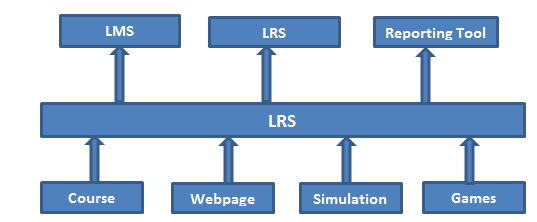Throughout the last decade, Software technology has disrupted many sectors and it continues to do so. This has left many established businesses to only rest on their past laurels, on their past glory; specially the ones those who were unable to anticipate the changes in the technology realm; the businesses who stubbornly decided to stick to their legacy environment instead of adapting to the new trends.
Companies like Yahoo, The learning Company, and ebay have only a fraction of fame & market share in the segments they once used to rule. This makes one wonder whether Darwin’s survival of the fittest applies to the businesses as well? I’ll leave that to you to find the answer! Coming back to the sectors that technology disrupted, education is the one which saw technology literally changing the entire ecosystem. Education was one of the few firsts where technology challenged the way of doing things.
The impact of internet technologies on the education sector has been immense and caused emergence of a new sector in itself, E-Learning. E-learning (or eLearning) is the use of electronic media and information and communication technologies (ICT) in education. From early initiatives led by Universities in 1990’s to the current publicly listed billion dollar companies, e-Learning has come a long way. Most of these university initiatives have already failed like NYU online, Fathom, etc. and attributed it to a host of factors other than technology. But there is still potential and many start-ups are growing into being the e-Learning giants.
The success factor for many businesses as obvious as it may seem, depends on being at par with the upcoming technology changes and adapting your current products or developing new ones to better suit the demand. Most companies are rigid in their product development approach and avoid upgrading to the latest technology standard. The n-1 version standard is obsolete in reality but companies are not ready to accept that. The ability of successfully anticipating the emergence of new technology and its role in your product is the most critical one in a company’s product road-map, which, all too often, forget to pay attention to.
However, anticipating these technology changes is not a rocket science and only requires a detailed view of the technology landscape that surrounds the company. But this is easier said than done, because most of the product managers or CTO’s are trapped in their own product road-map bubble. They often do not get to think of keeping some room for adapting future changes. This makes it necessary for the companies to collaborate with others and deliberate on the issues of emerging technologies promptly.
The collaboration with different entities outside the company helps produce diverse perspectives which are essential for innovation. This leads to the creation of an environment that is conducive; wherein awareness of environment is high. In a bid to keep everything in-house, CPO’s or CTO’s tend to develop a myopic vision of their product road-map and fail to realize the intangible benefits of a collaboration. Therefore the signs of an apparent upcoming change in the technology environment show up in unexpected places. They may be very subtle and unnoticeable to an undiscerning eye but a careful root-cause analysis can easily spot the mark.
Here are some technology changes that are expected to disrupt the e-Learning industry in the near future and change the equations of market share for the established companies:
Mobile Learning (mLearning):- It would seem like mobile learning is already here with every e-Learning company having its mobile apps or websites but it is not really in the real sense of mobility. Companies tend to forget that mobile is not the focus of delivery, its strength is rather in an assistive capacity. Mobility ensures ease of communication which majority of the products failed to leverage. Real-time communication via audio, video and text is not yet implemented on most of the e-Learning products. The usage of notifications and alerts in mobiles should be utilized to generate proper use of mobile in e-Learning. The frenzy of BYOD (Bring your own device) has disillusioned product managers in using mobile as a mode of delivery for learning instead of using it for creating a communication bridge between users. The rise of smartphones, phablets and tablets has further fueled this tendency but it will come to its logical end. It won’t take long for the companies to realize the real use of mobile in education and adopt it accordingly. The question is how long will it take for them to realize it?
Social Learning: - Though the hoopla surrounding the social networking sites is growing every day, nobody has understood the formula to its successful implementation other than those sites themselves. E-Learning companies are no different, they think just posting or linking updates to profiles on social networking sites is social learning. The usage of social networking sites to advance your own marketing agenda cannot be considered social learning. The key is that social networking sites should contribute and assist the main goal of learning to generate effective results rather than being a trophy feature in the product catalog. The rise of Massive Open Online Courses (MOOCs) is a step in right direction but it has some major pitfalls which arise mainly out of lack of control. The regulation & administration of MOOC’s remain a contentious issue and only time will tell whether MOOC’s will sustain the current hype it’s receiving.
Government Interventions: - Governments all over the world are focusing on education as a key aspect to fix the skills gap issue. Education costs itself forms a major part of the budgets of the governments, with US providing $68.6 billion in discretionary funding for the Department of Education for FY2015 (which is more than twice of the $27.9 billion in discretionary funds for the Department of Energy) This alone signifies the growing importance of education for various governments to gain competitive edge in the world. Supporting the ConnectED initiative, that will connect 99 percent of American students to the digital age to take full advantage of next-generation broadband and high-speed wireless networks in schools and libraries.
Also the US Government has proposed a $200 million budget for ConnectED initiative to ensure that students receive full benefit of this connectivity. Introduction of Common Core Standards for the state of California for 2014-15 is also changing the way of delivery for high quality education. These new standards for education are rigorous and internationally benchmarked- research- and -evidence-based; aligned with college and career expectations;. They also build on the foundation laid by individual states. To leverage on these initiatives and make the most of it, should be the highest priority on all the e-Learning companies’ agenda.
Wearables: - A lot is being talked about regarding the wearable technology and most of the companies have already launched or planning to launch smart-watches. The Google Glass is another invention that has caught the world’s attention and there are new applications coming up for every sector, every day. The use of this wearable technology is not yet introduced in e-Learning but it is evident it can play a very disruptive role in this industry. The experimental use of smart-watches to train athletes or using the Google Glass for performing a remote surgery suggest the various implications, wearable technology will have on our daily lives. E-Learning can definitely benefit from this technology to make learning more interactive and engaging. Though the wearable technology may not seem to go mainstream till the end of this decade, history suggests that it may happen much sooner than later. Capitalizing on this technology, starting now would surely deliver the first mover advantage and build the competencies by the time it goes mainstream.
All these points provide a glimpse of the upcoming events. E-Learning companies should try and focus on some of these indicators to make sure they don’t miss out and arrive late to the party. It is easier said than done and hence I would be taking a detailed look in my upcoming posts at steps/solutions to make these changes work for you. Keep watching this space to learn more.



